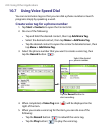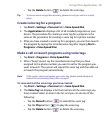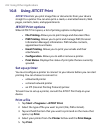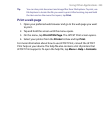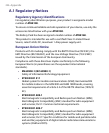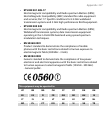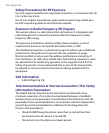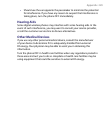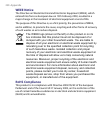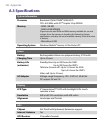228 Appendix
Safety Precautions for RF Exposure
Use only original manufacturer-approved accessories, or accessories that do
not contain any metal.
Use of non-original manufacturer-approved accessories may violate your
local RF exposure guidelines and should be avoided.
Exposure to Radio Frequency (RF) Signals
The wireless phone is a radio transmitter and receiver. It is designed and
manufactured not to exceed the emission limits for exposure to radio
frequency (RF) energy.
The exposure standard for wireless mobile phones employs a unit of
measurement known as the Specific Absorption Rate, or SAR.
The standard incorporates a substantial margin of safety to give additional
protection for the public and to account for any variations in usage.
Normal conditions only ensure the radiative performance and safety of
the interference. As with other mobile radio transmitting equipment, users
are advised that for satisfactory operation of the equipment and for the
safety of personnel, it is recommended that no part of the human body
be allowed to come too close to the antenna during operation of the
equipment.
SAR Information
• 0.836 W/Kg@10g (CE)
Telecommunications & Internet Association (TIA) Safety
Information Pacemakers
The Health Industry Manufacturers Association recommends that a
minimum separation of six inches be maintained between a handheld
wireless phone and a pacemaker to avoid potential interference with the
pacemaker. These recommendations are consistent with the independent
research by and recommendations of Wireless Technology Research.
Persons with pacemakers:
• Should ALWAYS keep the phone more than six inches from their
pacemaker when the phone is turned ON.
• Should not carry the phone in a breast pocket.



